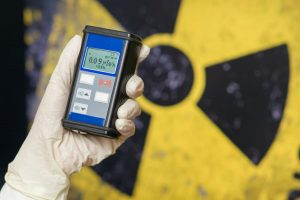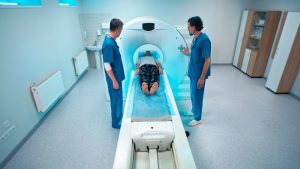Indianapolis Attorneys for Radiological Burns
Burn injuries are some of the most painful and physically damaging injuries a person can experience. Serious burn injuries can be life-altering, causing disfigurement, scarring, and quality of life changes.
While most people understand the impact scald, electrical, flame and chemical burns can cause, radiological burns sometimes fly under the radar. Yet, these kinds of burns can cause tissue damage and other health problems.
The Indianapolis burn injury lawyers of Hankey Marks & Crider understand that radiological burn victims face significant challenges. You may have physical and mental hurdles as you focus on your recovery. Unfortunately, victims of radiological burns also face financial instability from medical costs related to treatment and long-term rehabilitation.
Have you sustained a radiological burn in an incident that wasn’t your fault? Do you need to talk to someone about your legal options for recovering compensation for your injuries? Contact the experienced radiological burn attorneys with Hankey Marks & Crider online or by calling (317) 634-8565 today.
A History of Radioactivity
R adiation is energy that has both an electric field and a magnetic field associated with it. Radiation does not come in just one form. There is an entire electromagnetic spectrum ranging from visible light to the highest energy forms of radiation, like x-rays and gamma rays.
adiation is energy that has both an electric field and a magnetic field associated with it. Radiation does not come in just one form. There is an entire electromagnetic spectrum ranging from visible light to the highest energy forms of radiation, like x-rays and gamma rays.
In 1896, French physicist Henri Becquerel stumbled upon one of the most influential discoveries of the modern age: spontaneous radioactivity. His work with radioactive materials paved the way for others, including Marie and Pierre Currie’s studies of uranium in 1898. For over 100 years, scientists have been trying to uncover how radiation interacts with other objects and the human body. Early discoveries about the effects of radiation and radiation burns were generally accidental. It is assumed that the famed Marie Currie died because of bone marrow damage brought on by long-term exposure to radiation.
The damage caused by radiation and radiological burns did not gain widespread attention until World War II with the 1945 nuclear bombing of Hiroshima and Nagasaki. It is estimated that at least 37 percent of those injured at Hiroshima suffered radiation injuries. Radiation burns from the bombs caused acute and chronic problems for victims. The effects of radiation are still studied to this day.
What Are Radiological Burns?
Radiological burns are caused by exposure to radiation or radioactive materials. Technically, a sunburn is a type of radiation burn because ultraviolet or UV rays are one form of radiation. Other forms of radiation include x-rays and gamma rays. X-rays are a form of ionizing radiation and are most commonly used in medical applications. CT scans and x-rays expose a person to a small amount of this ionizing radiation to create images of the structures inside the human body.
Radiation therapy can also be used to target and treat some forms of cancer. High doses of targeted radiation can slow the growth of some cancer cells by damaging their DNA. Over time, the damaged cancer cells will stop dividing and die. There are two types of radiation therapy: external beam radiation and internal radiation therapy. External beam therapy uses a machine to precisely aim radiation at the point of the body impacted by cancer.
Radiation is all around us. It is only in high concentrations or through prolonged exposure that radiation causes adverse health effects. High doses can damage the DNA in human cells, increasing the chance of mutations that can cause cancer and other diseases. High doses of radiation can also cause burns, cutaneous radiation injuries, and acute radiation syndrome.
How Do Radiological Burns Occur?
 Radiological burns are more common than you may think. Again, one of the most common radiological burns is a sunburn. According to the Office of the Surgeon General, at least one out of every three people report getting sunburned every year. However, there are other causes of radiological burns, which can adversely impact a person’s health and well-being, including:
Radiological burns are more common than you may think. Again, one of the most common radiological burns is a sunburn. According to the Office of the Surgeon General, at least one out of every three people report getting sunburned every year. However, there are other causes of radiological burns, which can adversely impact a person’s health and well-being, including:
- Medical radiation used in diagnostic tools such as x-rays and CT scans
- Medical radiation used to treat cancer
- Exposure to radiation in the workplace
- Exposure to radiation through industrial accidents
The Cleveland Clinic estimates that four million people in the U.S. receive radiation therapy to treat cancer. Many of those patients will develop at least a mild form of a radiological burn. Up to 20 percent of cancer patients can develop more serious burn symptoms.
Symptoms of Radiological Burns
The symptoms of a radiological burn will depend on the severity of the injury. Mild burns may cause minor redness or itching, while more significant burns can result in open sores and tissue damage. Signs of a radiological burn can include:
- Redness
- Itching
- Swelling
- Dry or peeling skin
- Blistering of the skin
- Open sores
- Tissue damage
Unlike thermal burns, the signs of a radiological burn may not be apparent right away. A radiological burn can occur days or even weeks before visible symptoms appear.
Compensation for Radiological Burns
If someone else’s negligent actions caused you to sustain a radiological burn, you might be able to seek compensation for your injuries. You must consult with an experienced radiological burn attorney for help because you may have several options for recovering compensation depending on your unique situation.
If your radiological burn was caused by a negligent medical professional, you could potentially file a medical malpractice lawsuit against the practitioner or hospital. In cases where a radiological burn is caused by a workplace accident, it may be possible to get compensation through workers’ compensation benefits. Your path to meaningful compensation should be assessed by an attorney who understands radiological burns and how to hold negligent parties accountable for their actions.
Read advice about filing Workers’ Compensation claims from Stacy J. Crider, Partner At Hankey Marks & Crider.
Depending on the nature of your case, you may be able to recover money for the following:
- Medical expenses
- Rehabilitation
- Lost wages
- Loss of earning capacity
- Disfigurement
- Emotional distress
- Pain and suffering
You can find out more about legal news related to Workers’ Compensation on our blog or check our FAQ page for answers to questions related to your Personal Injury burn case.
For an accurate assessment of the value of your claim, get in touch with an experienced Indianapolis personal injury lawyer from Hankey Marks & Crider immediately.
Contact Our Team Today
Have you experienced a radiological burn through no fault of your own? Connect with the legal team at Hankey Marks & Crider for more information about how you may be able to recover valuable compensation for your injuries. You can discuss your situation privately with one of our knowledgeable radiological burn attorneys. Set up your consultation online or by calling us at (317) 634-8565. Your initial consultation is free.


